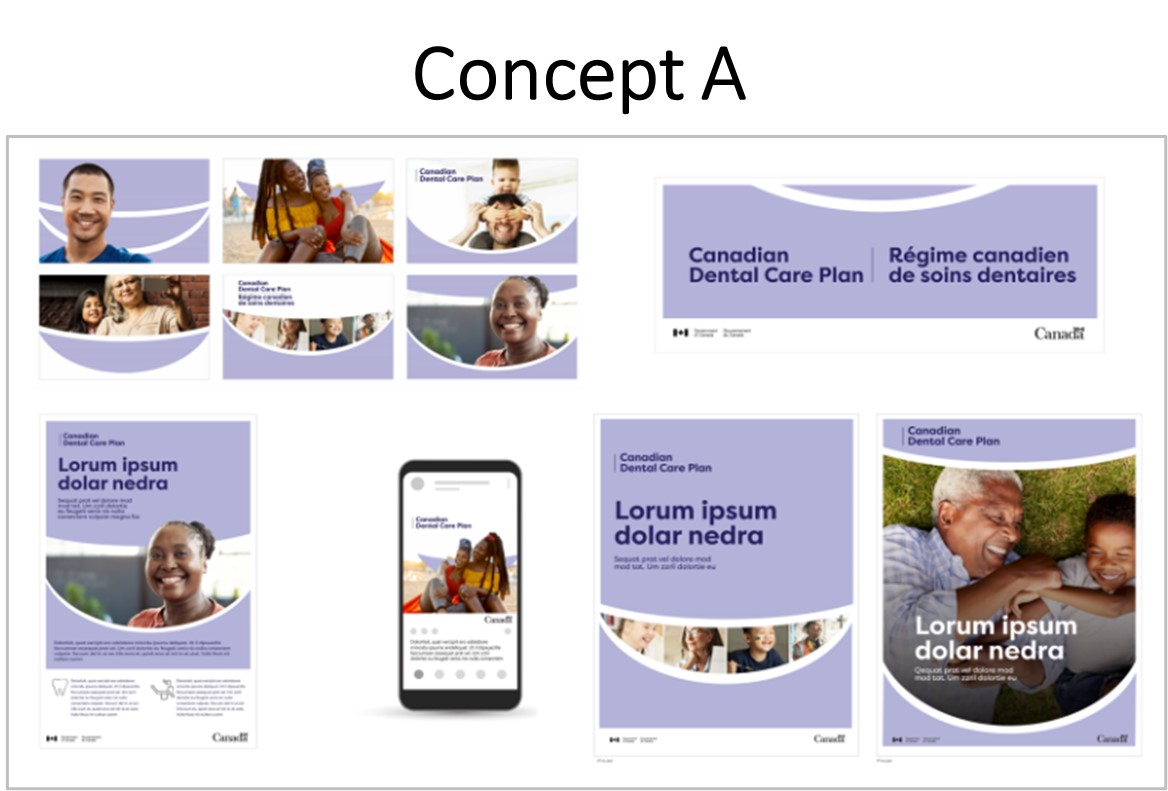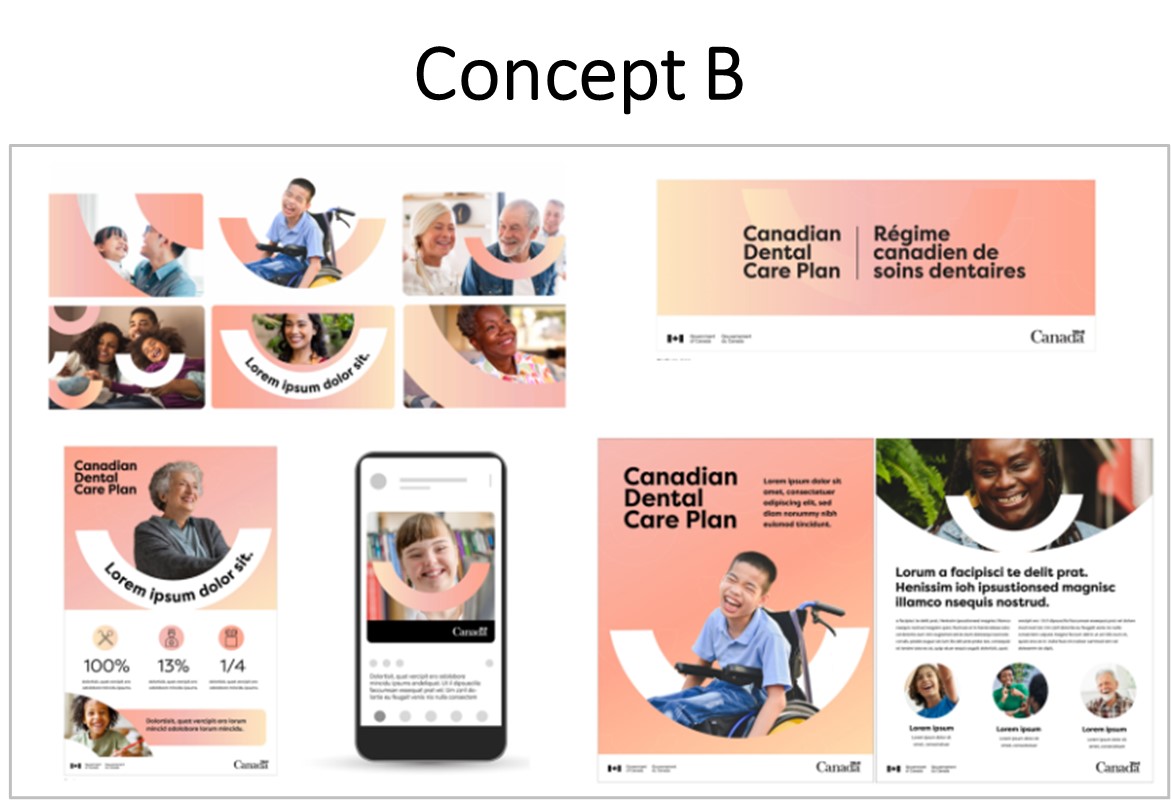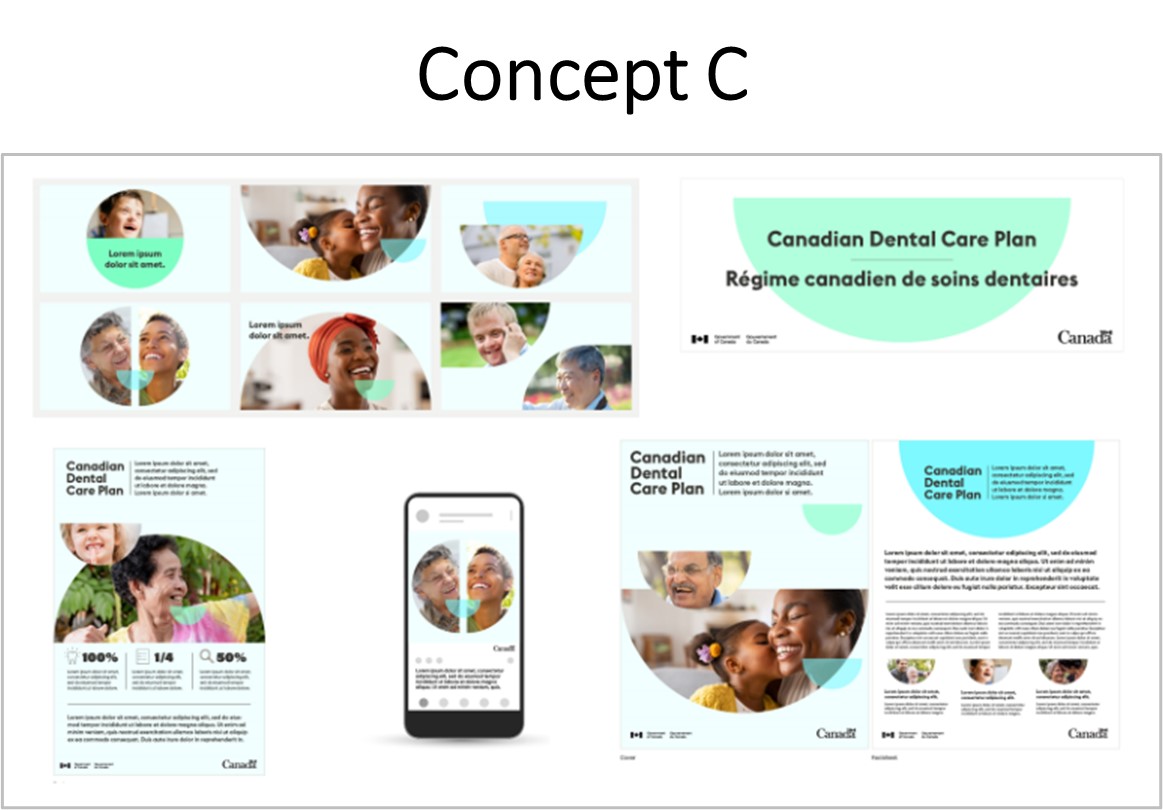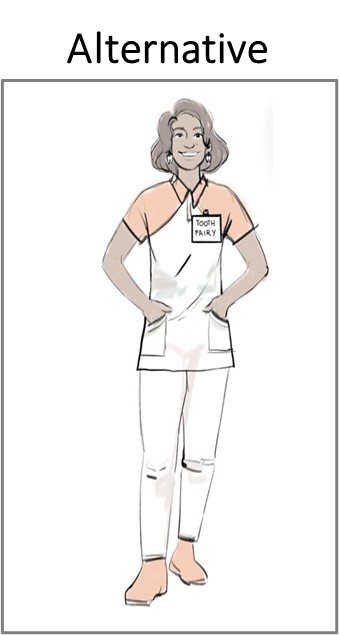
Prepared for Health Canada
Prepared by Narrative Research
PSPC Contract Number: CW2318794
Contracted Value: $144,577.85
Contract Date: 2023-06-16
Delivery Date: 2023-11-08
POR number: 018-23
For more information, please contact: HC.cpab.por-rop.dgcap.SC@canada.ca
Ce rapport est aussi disponible en français
Executive Summary
Supplier Name: Narrative Research
November 2023
This public opinion research interim report presents the results of focus groups conducted by Narrative Research on behalf of Health Canada for the second phase of the study. The research entailed two phases. The first phase included a total of five focus groups, namely one in each of five regions, while the second phase included a total of 20 focus groups in these same regions: Atlantic Canada, Ontario, Quebec, the Prairies/Northwest Territories/Nunavut, and British Columbia/Yukon. The target audiences included people from the general population (Phase 2 only); parents or guardians of children under the age of 18 years old; seniors over 65 years of age; people living with disabilities; and people residing in remote communities (located at least 100km from the nearest permanent dental professional). Phase 1 sessions each included a mix of target audiences, while sessions in Phase 2 were segmented by audience. All participants reported having a household income of less than $90,000, and 70% of participants in each group reported not having private dental insurance coverage, while 30% did. The Quebec and Francophone (Quebec/New Brunswick) sessions were conducted in French, while all other discussions were held in English. The fieldwork was conducted from July 11-13, 2023 for Phase 1 and from October 12-19, 2023 for Phase 2.
Cette publication est aussi disponible en français sous le titre :
Test en groupes de discussion du Régime canadien de soins dentaires
This publication may be reproduced for non-commercial purposes only. Prior written permission must be obtained from Health Canada. For more information on this report, please contact Health Canada at: cpab_por-rop_dgcap@hc-sc.gc.ca
Catalogue Number:
H14-580/2024E-PDF
International Standard Book Number (ISBN):
ISBN 978-0-660-70273-5
Related publications (registration number: POR 018-23):
Catalogue Number H14-580/2024F-PDF (Final Report, French)
ISBN 978-0-660-70274-2
© His Majesty the King in Right of Canada, as represented by the Minister of Health, 2023
Narrative Research Inc.
Contract Number: CW2318794
POR Registration Number: 0018-23
Contract Award Date: 2023-06-16
Contracted Cost: $144,577.85
Health Canada intends to implement the Canadian Dental Care Plan to provide dental coverage for uninsured Canadians with annual family incomes of less than $90,000, with no co-pays for those with family incomes under $70,000. The plan will be rolled-out initially for seniors, children under the age of 18, and people with disabilities who meet the other eligibility criteria. People living in rural and remote communities as well as racialized communities will also be a key focus for the new program. Once fully implemented, the plan will provide dental coverage for up to nine million Canadians.
In this context, Health Canada intends to refine communications and marketing activities for this entirely new initiative, set to launch in late 2023 and into 2025. A marketing campaign will be launched with the goal to raise awareness about the plan among all eligible Canadians, with an emphasis on priority audiences which include seniors, people with disabilities and parents of children under 18. Prior to finalizing the creative approach for the look and feel for the Canadian Dental Care Plan and the advertising campaign materials, Health Canada is interested in testing reactions to various concepts and messages, with the goal of informing the development of the final creative.
The objective of the research is to evaluate and gather feedback on several potential creative approaches and key messages among various groups of eligible Canadians to determine what direction(s) best resonates with the target audience(s).
Specifically, the first phase of the research examined options for the program look and feel, while the second phase of the research helped inform the choice of a specific creative approach. Each phase of the research was designed to help determine if the material tested was:
In addition, the research was designed to:
The results of this study will be used to direct Health Canada’s decision concerning the development of creative concepts for communications materials related to the Canadian Dental Care Plan for the campaign unfolding later in 2023. Specifically, the first phase of the research examined options for the program look and feel, while the second phase of the research helped inform the choice of a specific creative approach for the upcoming advertising campaign.
To achieve these objectives, a two-phase qualitative research approach was undertaken. Target audiences for both phases included: parents or guardians of children under the age of 18 years old; seniors over 65 years of age; people living with disabilities; and people residing in remote communities (located at least 100km from the nearest permanent dental professional). In addition, members from the general public were included in Phase 2. In both phases, all participants had a household income of less than $90,000. For each group, seven participants did not currently have private dental insurance coverage, and three had private dental insurance coverage. Each group included a mix of genders and ethnic background. The regions included in the research were also the same for both phases, namely: British Columbia/Yukon, Prairies/Northwest Territories, Ontario/Nunavut, Quebec, and Atlantic Canada). While the Quebec and Francophone (Quebec/New Brunswick) focus group discussions were held in French, all others were conducted in English. Participants received $125 in appreciation for their time.
The first phase entailed a total of five focus groups with a mix of the target audiences attending. Each session lasted approximately 90 minutes, and across groups, a total of 50 individuals were recruited and 43 participated. The second phase of research entailed a total of 20 focus groups, namely one session per region with each of the members from the general public, parents/guardians, and seniors 65+; three sessions with people living with disabilities (West, Ontario/Atlantic, Quebec/Atlantic); and two sessions with people living in remote communities (East/North and West/North). Each session lasted between 90 minutes and two hours. From 200 recruited individuals, 172 participated in a session. Due to technical issues, three participants were unable to attend the sessions but were incentivized, as is normally the practice in market research.
All participants were recruited per the recruitment specifications for the Government of Canada. Recruitment was conducted through qualitative panels stored on Canadian servers, with follow up calls to confirm the details provided and to ensure quotas were met.
This report presents the interim findings from both phases of the study. Caution must be exercised when interpreting the results from this study, as qualitative research is intended to be directional only. Results cannot be attributed to the overall population under study, with any degree of confidence.
I hereby certify as a Representative of Narrative Research that the deliverables fully comply with the Government of Canada political neutrality requirements outlined in the Directive on the Management of Communications. Specifically, the deliverables do not include information on electoral voting intentions, political party preferences, standings with the electorate or ratings of the performance of a political party or its leaders.
Signed:

Margaret Brigley, CEO & Partner | Narrative Research
Date: November 8, 2023
Barriers to Dental Care
Financial considerations are by far the main barriers to seeking more regular dental care, even among those with dental insurance coverage. Anxiety, notably the fear of pain, is also top-of-mind, while accessibility is an issue raised by those living in remote or rural locations.
Awareness of Financial Assistance
While there is knowledge of the provincial or territorial dental coverage programs available to seniors and children, virtually no one recalled having heard of the Canada Dental Benefit by name or any other federal government programs available to assist with the cost of dental care. That said, some parents are aware of the benefit for children under 12, although they do not spontaneously associate it with the Canada Dental Benefit. For those who are aware of government programs, program awareness stems from the Canada Revenue Agency, Service Canada or a dental professional.
Concept Testing
During the focus groups, participants were presented with three concepts that presented a ‘look and feel’ for communications materials related to the Canadian Dental Care Plan. Each concept was presented and discussed one at a time, with the presentation order rotated across groups to minimize any presentation bias. Following the discussion of all three concepts, participants were asked to choose which one is most likely to grab their attention in a positive way and perhaps make them want to find out more about the Canadian Dental Care Plan.
Overall Reactions Across Concepts
A number of graphic elements elicited similar comments across the concepts tested. More specifically, the font was appreciated for being approachable, warm, friendly, and easy to read, while providing a casual and inviting vibe. This tone is supported by showing visuals of smiling and happy people, though the individuals shown appeared a little too ‘perfect’ and ‘staged’ to be relatable. Showing a variety of body-type and facial features, as well as diversity in the types of smiles and dental status would make any of the three concepts more engaging.
At the same time, none of the visuals effectively communicate the topic of dental care. Further, they fail to show how good oral hygiene contributes to a healthy lifestyle, thus supporting the importance of seeking regular dental care. Showing situational instances where someone’s teeth are cared for during daily activities would draw attention (e.g., someone eating an apple or an amateur sports player wearing a mouth guard), as long as the types of care shown is covered by the Plan.
The three concepts currently show individuals from various backgrounds and demographics to varying degrees, generally suggesting that the Plan is all-inclusive, but with a special focus on seniors, children and visible minorities. In selecting the visuals for the final concept, care should be taken to achieve a good representation in terms of ethnic background, age, and gender.
Concept A (Purple Shade)

Overall reactions to this concept were mostly positive, notably for the ‘clean’, calm, simple and professional design. Despite appeal for its simple graphic design and muted tone, this concept lacks strong visual impact and personal relevance. The colours are soothing but somewhat passive and lacking a sense of excitement. Despite being evocative of a smile, the purpose for the background motif is not clear and while it contributes to making the approach look more dynamic, it is seen by some as distracting. The choice of visuals seems skewed towards visible minorities, suggesting that the program is primarily for newcomers. Images are also more family oriented and inclusive of seniors than the other concepts. In general, the concept lacks personal relevance by failing to illustrate more realistic people and situations. That said, having people look directly at the camera is engaging. Overall, this concept has more of a generic and corporate design which is closest to what is expected of ‘typical government’ material.
Concept B (Curved Design)

This concept elicited mixed reactions. The bright, warm, and unusual colour grabbed the attention of some, while others disliked it. Some found the visual components interesting and modern, while others felt that it made the concept look cluttered and took away the focus from the message. That said, most disliked the graphic shaped like a smile for obstructing the images, being too rigid and not readily suggestive of a smile. The use of statistics and ratios is liked and draws attention to important information, as long as the information is easy to understand and meaningful. This concept’s visuals held a little more personal relevance than the other two, for showing more realistic and ‘imperfect’ people, some of whom look genuinely happy. There is also a greater diversity of smiles represented.
Concept C (Abstract Smile)

This concept was felt to be the least visually interesting of all three, due to low contrast, a white background, muted tones, and visual clutter. The semi-circle graphic was not readily associated with a smile and the way it frames images or is shown on top of images is distracting and confusing. That said, the design gives the impression that more information would be provided, and there is some appeal for the way the text is divided in paragraphs or blocks. Further the presence of statistics and pictograms grabbed attention. While this concept speaks to a broad audience, some felt less compelled by it as it focuses on select demographic groups, including seniors and newcomers.
Concept Preference
Concepts A and Concept B are equally preferred among English participants, while French-speaking participants expressed a preference for Concept C, with split opinions on Concept A or B being second. Concept A is preferred for its uncluttered design, its simplicity, the calm colour palette, and simple graphic elements that does not overpower the images. Concept B is preferred for its attention-grabbing and warm colour scheme, dynamic design, and for showing images of people with more genuine smiles. Both held appeal for having some visuals of people looking directly at the camera. French-speaking participants preferred Concept C for the appearance of being more informative and for the manner in which the information is presented in paragraphs or blocks of text.
Regardless of the final concept, social media, traditional media (notably television and radio), direct mail, and brochures or posters in health-related public location were see as the best way to inform the public about the Canadian Dental Care Plan.
Key Messaging
Participants were also shown seven statements and asked for their general feedback, as well as being asked to choose which one would be most likely to encourage them to search for more information on, or enroll for, the Canadian Dental Care Plan, and which statement they prefer overall. The statements included:
The tagline “Accessible. Affordable. Essential.” was by far the preferred and deemed most effective across groups, for addressing the main barriers to seeking dental care. That said, it is a strong promise that creates high expectations about the plan. The tagline “Dental care you can depend on,” was also the most liked for the reassurance it provides.
Prior to discussing the creative material, participants were asked to briefly explain some of their choices related to their own dental care, or that of other people in their household.
Barriers to Dental Care
Cost is a major barrier to dental care access, and fear of pain, anxiety and past negative experiences also hindered some individuals. Residents in remote areas face travel and availability issues, while those living with disabilities mentioned accessibility concerns. Less frequently cited obstacles included time constraints and inconvenient hours.
Awareness of Financial Assistance
Some individuals in each group were already informed about the Canadian Government’s future plans to provide dental care coverage, though the majority lacked specific information. A small number had learned about these initiatives from sources such as the Canada Revenue Agency website or various news outlets.
Concept Testing
Participants were shown three creative concepts for communications materials, each including a video, print and digital banner advertisement. Each concept was presented and discussed one at a time, with the presentation order rotated across groups to minimize bias. Participants were asked to focus on the message and idea or approach, given that sketches were used (rather than fully produced advertisements).
Overall Reactions
It is clear that participants generally gravitate towards more simple messages that are clearly presented. Regardless, participants are happy to learn of the program’s upcoming arrival, particularly given that the cost is the main barrier to going to the dentist. The tagline used in some of the concepts was generally well received, however, there is a need for more clarity regarding the target audience.
Furthermore, the materials that were tested prompted participants to have a lot of questions about the new dental care program, such as who qualifies, what would be covered, etc. Participants also noted that some elements of wording caused confusion and need to be re-assessed upon further consideration. Relatedly, care must be taken not to make any audience feel that they are being talked down to, stereotyped or infantilized as this impression can provoke strong negative reactions. Lastly, showing a diverse group of people and types of family situations suggests that the Canadian Dental Care Plan is inclusive of all, though to ensure understanding, the use of diversity should not overshadow the program messaging.
The three concepts currently show individuals from various backgrounds and demographics to varying degrees, generally suggesting that the Plan is all-inclusive, but with a special focus on seniors, children and visible minorities. In selecting the visuals for the final creative concept, care should be taken to achieve a good representation in terms of ethnic background, age, and gender.
The creative concepts are summarized below.
Concept A (Smiles)

Positive reactions to this concept were overshadowed by the focus on smiles, leading many to confusion or a belief that the most important part of the dental care is the cosmetic part. Many felt the smiling images were inappropriate for a serious topic and that the headline was not clear in what it was trying to communicate. That said, participants largely stated they would attempt to seek more information after seeing the concept. Many appreciated the great level of diversity presented in the concept, while others felt it superseded the intended message about dental care. The upbeat music also grabbed attention, and although most enjoyed the upbeat cheerfulness, a few felt it to be off-putting.
Concept B (Tooth Fairy)

Alternative

This concept elicited mixed reactions as the ‘tooth fairy’ approach only resonated with a few, and many found it offensive or confusing. While the concept was fun and nostalgic, seniors and those living with disabilities found it to be condescending. Despite all the strong reactions, the message was still clearly understood and many would seek more information about the program. Conversely, participants were somewhat unsure who the target audience was intended to be, whether it be families, children or seniors. The alternative tooth fairy portrayal also received mixed reviews with some having preferred the magical approach and some having preferred a more medical / clinical appearance.
Concept C (Simple Facts)

This concept was the overall preference of participants, primarily due to its level of clarity, relatability, and straightforwardness. Many also appreciated the seriousness of the approach, rather than something that was perceived to be more cosmetic or silly. Generally, the concept was said to be believable, and it would grab the attention of participants. The ‘frozen peas’ scenario was nearly universally relatable to participants. That said, some highlighted that the individual in pain is portrayed in a stereotypical way, with the younger person ‘knowing it all’ and the older person being weak and oblivious. For that reason, some seniors found it condescending, despite the scenario itself being very relatable (being in pain but not going to the dentist). The concept, overall, was deemed the strongest and the one that would motivate participants to investigate the program further.
Concept Preference
Following the discussion of each of the three concepts, participants were asked to choose which one is most likely to grab their attention in a positive way and perhaps make them want to find out more about the Canadian Dental Care Plan.
Concept C (Simple Facts) was the top choice among all groups, with most participants finding it the most enticing and clear for conveying information about the new dental care program. Its relatable and lighthearted approach was widely appreciated. By contrast, Concepts A (Smiles) and B (Tooth Fairy) were chosen by only a few, with Concept A being liked for its positivity, while Concept B was seen as appealing to children and families.
Regardless of the final concept, social media, traditional media (notably television and radio), direct mail, and brochures or posters in health-related public locations were seen as the best way to inform the public about the new Canadian Dental Care Plan.